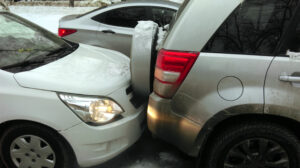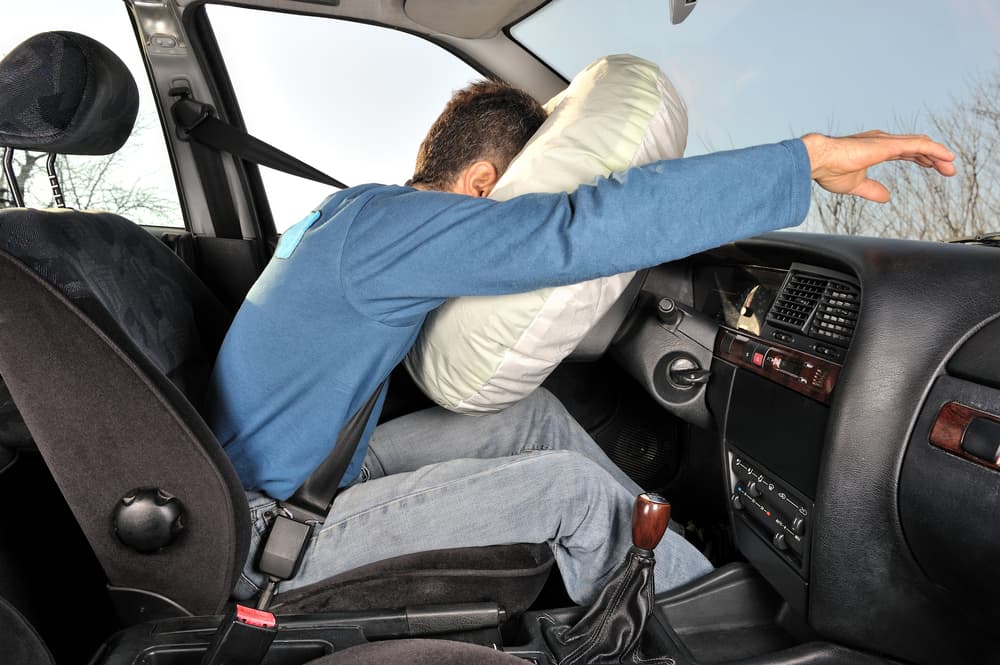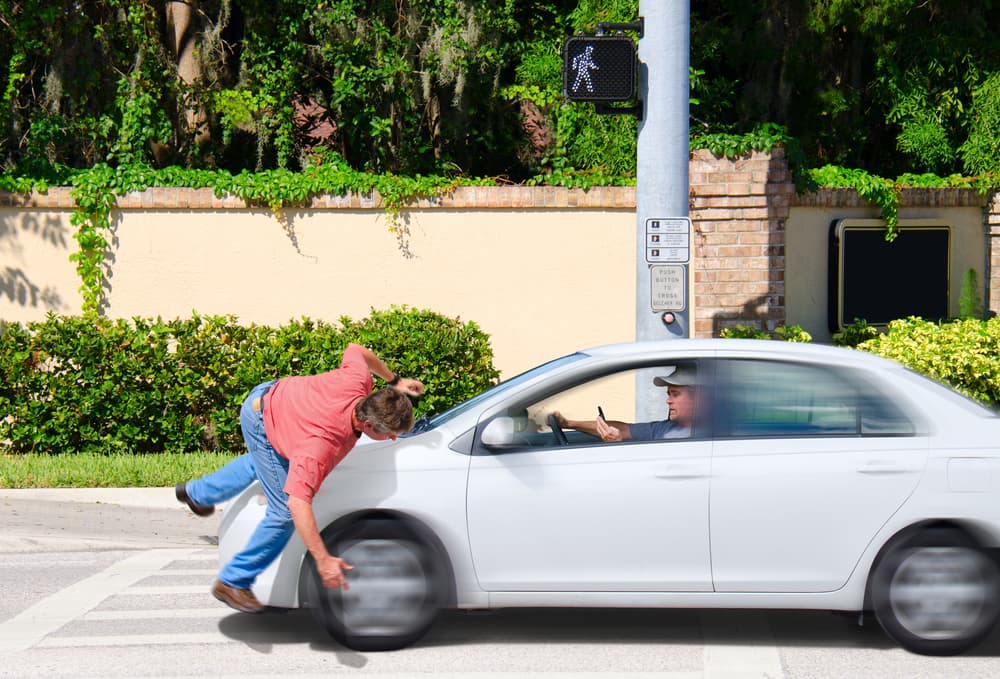Car accidents are unfortunate occurrences that can happen to anyone at any time. Among the various collisions, rear-end accidents are among the most common. However, just because they are common doesn’t mean they are minor or acceptable. These accidents can lead to severe and even fatal injuries, requiring the services of an experienced car accident attorney in Wesley Chapel to maximize compensation.
Types of Rear-End Accidents

A rear-end accident occurs when a vehicle fails to stop quickly enough to avoid hitting the car in front of it. According to the National Highway Traffic Safety Administration (NHTSA), these accidents are the most common type of motor vehicle accident. Statistically, one occurs every eight seconds in the United States, adding up to a shocking 2.5 million rear-end accidents every year.
Rear-end accidents can happen in many different ways, each with its own potential for severity:
- Low-speed impact: This occurs when the rear driver rolls into the back of the front driver’s vehicle at a relatively low rate of speed. While it may seem minor, even low-speed impacts can lead to significant injury and property damage.
- Stopped vehicle collision: In this scenario, the rear driver, traveling at a moderate or high rate of speed, collides with the front driver’s vehicle, which is stationary. Such a collision often results in more substantial damage and injuries.
- High-speed rear-end collision: When the rear driver moves faster than the front driver and crashes into the front vehicle, both vehicles may be in motion. These collisions can be severe, often causing extensive damage and severe injuries.
In certain situations, the driver who rear-ends another car may not automatically be at fault. While the general rule places responsibility on the rear driver due to maintaining a safe following distance, specific circumstances can alter this liability, potentially placing it on the driver of the front car.
Rear-End Accident Causes
Rear-end accidents can have many different causes and contributing factors.
Various forms of reckless driving behavior and external factors contribute to the occurrence of these accidents, including:
- Tailgating: This happens when one driver closely follows another vehicle, significantly reducing reaction time. If the front car slows down or stops abruptly, the tailgating driver may be unable to prevent a collision.
- Distracted driving: Any activity that diverts a driver’s attention from the road can lead to a failure to stop in time to avoid rear-ending another vehicle. Common distractions include cell phone use, adjusting the radio, and eating or drinking while driving.
- Disregarding traffic laws: Speeding is a prevalent issue linked to rear-end collisions. If a driver exceeds the speed limit, they may find it challenging to bring their vehicle to a halt in time to avoid colliding with another vehicle.
- Adverse weather: Heavy rain, snowfall, or icy road conditions can impede a driver’s ability to stop in time. Driving poorly in such conditions may lead to losing control of the vehicle, resulting in a high-speed collision with another car. It’s a driver’s responsibility to adjust their driving to current weather conditions, such as reducing their speed if snow and ice are on the roadways.
- Car defects: Malfunctions, particularly in a vehicle’s braking system, are a common maintenance issue that can lead to a rear-end collision. A faulty braking system may render a driver unable to decelerate and stop in a timely manner.
- Driver error: Occasionally, a driver may make errors that result in a collision from behind. For instance, witnessing an unrelated accident might cause panic and loss of vehicle control. Similarly, a driver’s foot may slip, inadvertently pressing the gas pedal instead of the brakes.
Recognizing these contributing factors is crucial in understanding the dynamics behind rear-end accidents. Legal professionals specializing in car accidents can provide invaluable guidance in navigating the aftermath of such incidents, including launching an investigation into how the accident happened and who might be at fault.
When Might the Rear Driver Not Be at Fault for a Rear-End Accident?
While the rear driver is often to blame and genuinely at fault for causing a rear-end accident, this isn’t always the case.
Here are some situations where the driver who rear-ends another car may not bear responsibility:
- Non-functioning brake lights: If the car in front has non-functioning brake lights and cannot signal its intention to stop, the driver who rear-ends them may not be held solely responsible for the accident.
- Abrupt deceleration without executing a turn: If the car ahead suddenly slows down in preparation for a turn but ultimately decides not to complete the maneuver, the driver who rear-ends them may not be at fault. This scenario hinges on the sudden change in speed without a corresponding turn.
- Reversing into traffic: When a driver reverses into oncoming traffic, causing another driver to collide with them, the driver struck from behind may be primarily responsible for the accident.
- Failure to address a flat tire: If a car experiences a flat tire and does not take appropriate measures, such as pulling off the road or activating hazard flashers, a driver who subsequently rear-ends them may not bear full liability for the collision.
The applicability of these exceptions depends on specific circumstances and may vary based on local traffic laws and regulations. Moreover, each case is unique, and determining liability in a rear-end accident requires careful examination of the details surrounding the incident.
No matter the circumstances surrounding your rear-end accident, secure the representation of a seasoned car accident attorney who can determine fault for your accident and hold them liable for your damages.
How a Lawyer Can Support You After a Rear-End Accident
After a rear-end accident, seek the representation of a skilled lawyer.
Here are some things a skilled attorney can offer:
- Determining liability: Establishing fault in a rear-end collision may seem straightforward, but complexities can arise. A seasoned attorney can examine the circumstances to ensure the responsible party is held accountable.
- Navigating legal processes: The aftermath of an accident can be overwhelming, especially if you’re dealing with injuries. A lawyer will guide you through the legal proceedings, ensuring you meet crucial deadlines, gather necessary evidence, and file paperwork accurately.
- Negotiating with insurance companies: Dealing with insurance companies can be daunting. Lawyers are well-versed in negotiating with insurers to secure the maximum compensation for your damages, including medical expenses, property damage, and lost income.
- Preparing for litigation: If negotiations do not result in a fair settlement, a lawyer will be ready to take your case to court. They will build a compelling case, present evidence, and advocate on your behalf.
- Protecting your rights: Insurance companies may try to shift blame or downplay the extent of your injuries. A lawyer protects your rights and ensures that insurance companies do not take advantage of you during the claims process.
Rear-End Accident Injuries
Even seemingly minor rear-end collisions can lead to delayed-onset injuries. Seek immediate medical attention after an accident. Not only does this prioritize your health, but it also establishes a clear link between the accident and any subsequent injuries you are diagnosed with.
If you fail to seek medical care promptly, the at-fault party may argue that your injuries did not result from the rear-end collision. It can weaken your claim for damages.
While rear-end collisions can result in various injuries, some of the most common affect critical areas such as the neck, back, head, brain, and spinal cord. These injuries can have long-lasting effects on a person’s well-being and quality of life, which can significantly increase compensation in a car accident injury claim.
Whiplash
Whiplash, a common injury in rear-end collisions, occurs due to the neck’s sudden, forceful back-and-forth movement, akin to the cracking of a whip. While some cases of whiplash resolve with medication and treatment over a few weeks, others can have lasting effects, leading to chronic pain or restricted neck mobility.
Back Injuries
In addition to whiplash, back injuries are also prevalent outcomes of rear-end collisions. The blunt impact can result in compression of the spine or discs, especially in the lower back. Severe bruising of back muscles may also occur.
These injuries can bring about significant and potentially permanent pain, altering your ability to perform everyday activities. Tasks like lifting objects, walking, sitting, lying down, and even personal hygiene routines may become challenging.
Head and Brain Injuries
Head and brain injuries are another critical concern following a rear-end collision. The abrupt forward thrust of your head may lead to contact with the windshield, dashboard, or airbag deployment, resulting in lacerations, bruising, scarring, and other forms of disfigurement.
Depending on the force of the impact, a traumatic brain injury (TBI) may occur, such as a concussion or brain bleed. These injuries can lead to cognitive impairments, personality changes, ongoing seizures, and physical limitations if the brain’s ability to communicate with the body’s systems is compromised.
Spinal Cord Injuries (SCI)
Furthermore, rear-end collisions can cause spinal cord injuries when specific regions of the brainstem or spinal cord sustain damage. Some accident victims will suffer partial or total paralysis, significantly impacting mobility and quality of life.
Other Serious Rear-End Accident Injuries
Several other serious injuries that can result from rear-end accidents:
- Facial injuries: The impact of a rear-end collision can cause occupants’ faces to strike various surfaces inside the vehicle. This can lead to injuries such as cuts, bruises, fractures, and, in severe cases, damage to the eyes, nose, or jaw.
- Chest injuries: The force of impact can cause occupants’ chests to strike the steering wheel, dashboard, or seatbelt, resulting in injuries like contusions, broken ribs, or, in extreme cases, damage to internal organs.
- Pelvic and abdominal injuries: Similar to chest injuries, occupants may experience trauma to their pelvis or abdominal area from striking the vehicle’s interior. This may cause fractures, bruising, or damage to internal organs.
- Knee and leg injuries: In a rear-end collision, occupants may find their legs forced against the dashboard or other structures in the car, causing injuries like fractures, dislocations, or soft tissue injuries.
- Internal injuries: These injuries may not be immediately visible and can include damage to internal organs, bleeding, or other severe conditions. Prompt medical attention is crucial to diagnose and treat these injuries.
- Fractures and dislocations: The force of a rear-end collision can cause bones to break or joints to become dislocated in various parts of the body, including the arms, legs, wrists, and shoulders.
- Nerve damage: Trauma from the accident can lead to nerve injuries, resulting in pain, numbness, or loss of sensation in affected areas.
- Airbag injuries: While airbags aim to protect occupants, they can also cause injuries, particularly if they deploy with excessive force. Burns, abrasions, or, in rare cases, more severe injuries may result.
- Psychological trauma: Car accidents, especially those involving rear-end collisions, can be emotionally traumatic for individuals involved. They may experience anxiety, depression, or even post-traumatic stress disorder (PTSD) due to the accident.
Given the severity and potential long-term consequences of these injuries, seeking immediate medical attention after a rear-end collision is paramount. Additionally, consulting with a car accident lawyer can protect your legal rights and ensure you receive fair compensation for your injuries and damages. The full extent of injuries may not always immediately appear, underscoring the importance of professional legal and medical advice.

Were You in a Rear-End Accident? Contact a Skilled Car Accident Attorney Today
Consulting with a car accident attorney who is well-versed in traffic laws and regulations can provide valuable insights and assistance in understanding the complexities of liability in rear-end accidents. They can navigate the legal process and protect the rights and interests of injured crash victims.
If you were recently in a rear-end accident, don’t hesitate to schedule a consultation with an attorney as soon as possible. Many people assume rear-end crashes are too minor to warrant legal assistance, but this cannot be further from the truth. Anytime a rear-end accident causes injuries or losses, consult a local car accident lawyer.



